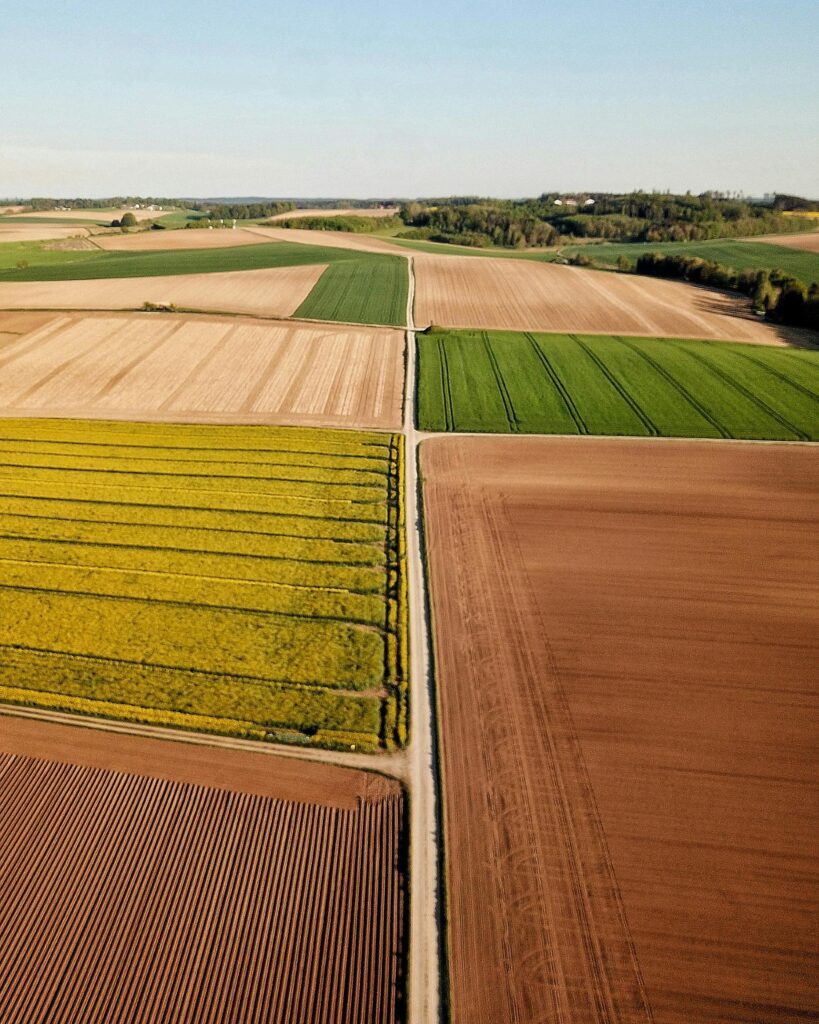Your Ultimate Guide to Selling North Carolina Farmland
From Farm to Market: Your Guide to Selling North Carolina Farmland Table of Contents Introduction Land Scams on the Rise: Protecting Yourself From Scammers How to Avoid Scams and Ensure Payment Security When Selling Land Ready, Set, Sell! Listing Your Land: Finding the Right Buyer The Fast Track to Selling Your Land: Selling to a Land Investor The Closing Stretch: Sealing the Deal from Out-of-state Conclusion North Carolina’s farmland is more than just scenic beauty; it’s a powerful economic engine and a source of deep-rooted pride. With 8.1 million acres of fertile land spread across its 100 counties, agriculture is a driving force in North Carolina. In fact, according to the NC Department of Agriculture & Consumer Services, the agriculture and agribusiness industries in North Carolina generated a combined economic impact of $111.1 billion in 2023. This includes value-added income from the farm to the consumer, sales revenue, and payroll for those employed in the agricultural sector, demonstrating the significant role these industries play in the state’s economy. But North Carolina’s farmland offers more than just economic strength; it boasts remarkable diversity. Farmers cultivate a wide array of crops, taking advantage of the state’s varied geography and climate. From the traditional tobacco fields and cotton plantations of the east to the bountiful apple orchards and evergreen Christmas tree farms nestled in the western mountains, the state’s agricultural output is remarkably diverse. And let’s not forget the significant contribution of livestock to this landscape, with poultry, swine, and cattle operations found throughout the state. In terms of cash receipts from farming, livestock, dairy, and poultry contribute 74.3%, while crops make up 25.7% of the total. North Carolina is also a major player in certain crops, being the top producer of sweet potatoes in the U.S., accounting for about 54% of all sweet potatoes grown in the country. (Source: Economic Research Service, USDA) (Source: Economic Research Service). Who is this guide for? This guide is designed to be a valuable resource for a wide range of individuals involved in the North Carolina farmland market, including: Farmers preparing for retirement – If you’re a farmer considering selling your land to embark on a well-deserved retirement, this guide will provide you with the necessary knowledge and resources. Individuals who have inherited farmland – Inheriting farmland can bring a mix of emotions and uncertainties. This guide will help you understand your options and navigate the complexities of selling inherited property. Investors exploring agricultural opportunities – For those seeking to diversify their investment portfolio with the addition of agricultural land, this guide offers valuable insights into the North Carolina farmland market. Understanding the NC Farmland Market The North Carolina farmland market is a dynamic landscape influenced by a variety of factors. Understanding these forces is crucial for both buyers and sellers to make informed decisions. Residential Demand for Farmland One of the most significant trends is the increasing demand for rural properties for both residential and commercial development. As urban areas become more congested and expensive, many individuals and families seek a more peaceful lifestyle in rural settings, driving up the value of farmland suitable for home construction. At the same time, developers are also eyeing large tracts of farmland located near utilities and with access to infrastructure, recognizing their potential for creating residential subdivisions, shopping centers, or other commercial ventures. This combined demand from individuals seeking a rural lifestyle and developers seeking development tracts further intensifies competition for farmland and drives up prices, often creating a significant price premium compared to land intended solely for agricultural use. Market Dynamics Beyond residential demand, several other factors shape the farmland market: Current Trends –The rise of organic farming, agritourism, and sustainable agriculture practices are influencing farmland values. Consumers are increasingly interested in locally sourced, organic food, creating new opportunities for farmers and driving demand for land suitable for these practices.According to the 2022 Census of Agriculture, the number of organic farms in North Carolina increased by 15% from 2017 to 2022, reflecting this growing consumer preference. The state counts 22,940 new and beginning producers, up from 20,298 in 2017. Agritourism, which involves offering recreational activities and experiences on farms, is another growing trend that can add value to farmland by diversifying income streams. Factors Affecting Value – Beyond location and development potential, several key factors influence farmland value: Soil Quality –Fertile soil is essential for agricultural productivity. The NC Department of Agriculture & Consumer Services offers soil testing services to help landowners assess their soil quality and understand its potential for various crops. Water Access – A reliable water source, whether through irrigation rights, wells, or surface water access, is crucial for farming operations and significantly impacts land value. North Carolina has specific regulations regarding water rights, and it’s essential for landowners to understand these legal frameworks. Infrastructure –The presence of well-maintained buildings, fences, irrigation systems, and other infrastructure can increase the value of farmland by enhancing its productivity and efficiency. Proximity to Markets – Farmland located near urban centers, processing facilities, or transportation routes benefits from reduced transportation costs and easier access to markets, increasing its overall value. Market Data and Statistics To make informed decisions in the farmland market, it’s essential to have access to relevant data. Here are some key statistics to consider: 1. Average Farmland Prices – The average price of farmland in North Carolina in 2024 is $5,101 per acre, with values ranging from $8400 in high-value areas to lower prices in other regions. This represents a 7% increase from 2023 and continues a steady upward trend since 2020. This data, from the USDA’s 2024 Land Values, indicates a strong and growing market for North Carolina farmland. 2. Average Residential Land Prices – In North Carolina, farmland values average $5,150 per acre, according to USDA reports. In contrast, residential land prices vary significantly, often averaging $45,000 per acre or more in suburban and high-demand areas. In rapidly growing regions like Wake County, residential land can exceed $100,000 per acre, especially near major highways and






